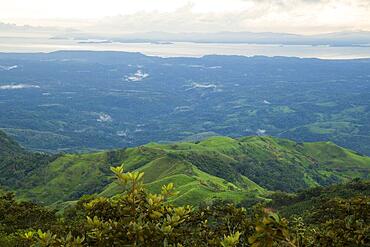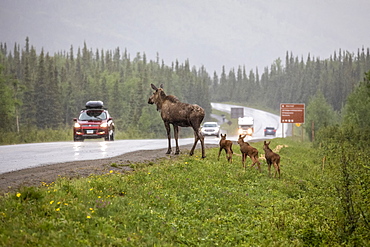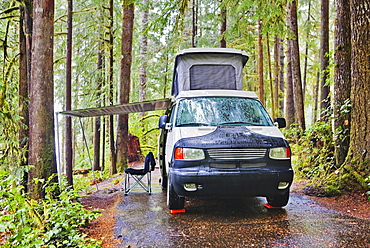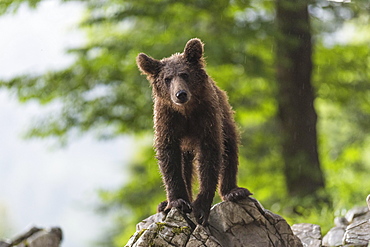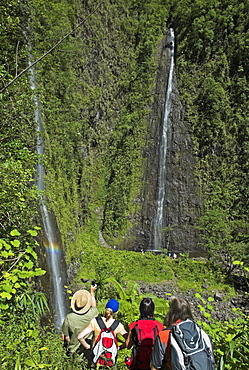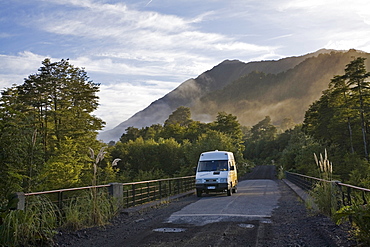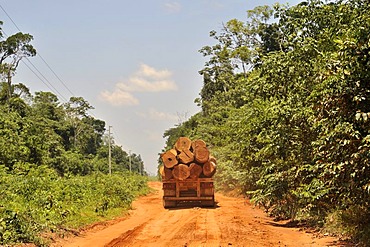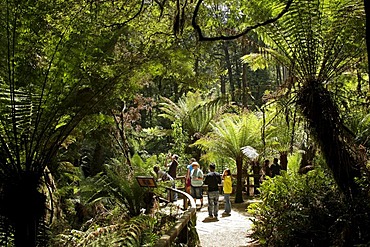Recent searches
Loading...
832-403604 - Top view tropical forest rainy weather
1350-6678 - Strawberry Poison Frog (Dendrobates pumilio), adult, Bastimentos National Park, Bocas del Toro, Panama. The strawberry poison frog or strawberry poison-dart frog (Oophaga pumilio or Dendrobates pumilio) is a species of small amphibian poison dart frog found in Central America. It is common throughout its range, which extends from eastern central Nicaragua through Costa Rica and northwestern Panama. The species is often found in humid lowlands and premontane forest, but large populations are also found in disturbed areas such as plantations. The strawberry poison frog is perhaps most famous for its widespread variation in coloration, comprising approximately 15���30 color morphs, most of which are presumed to be true-breeding. O. pumilio, while not the most poisonous of the dendrobatids, is the most toxic member of its genus. The species is most diverse in Panama with varieties in vivid shades of all red, orange, blue, yellow or green, green and yellow, white with red, orange or black and spotted varieties. The most colorful mix is found in Isla Bastimentos Marine National Park though not all in one place. Colors vary by location. A beach on the north side of the island is named after the species. Two of Southern Explorations' Panama tours visit red frog habitat. Both the eight-day Panama Adventure trip and eleven-day Panama Highlights trip spend time in Isla Bastimentos Marine National Park and the former also goes to Red Frog Beach.
The red frog is not as poisonous as some of its cousins and is not a threat to humans. It subsists on a diet of ants that dine on poisonous plants, providing the red frog its protective skin toxin. Males attract females with a loud quick chirp. To hear the distinctive sound before you depart on your Panama tours, go to the University of Michigan Museum's biodiversity website (www.animaldiversity.ummz.umich.edu.) After birth, the tadpoles climb aboard the mother who deposits them in different protected areas where she retu
1160-5031 - Rain forest near Catarata del Toro, waterfall, Alajuela, Costa Rica, Central America
1113-105675 - Madagascar in the rain in the fishing village of Evatra, Southern Madagascar, Africa
860-289944 - Jetty on Aiguebelette lake at dusk, Savoie, France
1178-35982 - Caucasian girl hanging on zip line in forest
1178-35983 - Caucasian girl hanging on zip line in forest
805-49 - Iban tribal villagers sheltering from the rain on their longhouse verandah, Lemanak River, Sarawak, Malaysian Borneo, Malaysia, Southeast Asia, Asia
1116-50264 - Cow moose (Alces alces) with rare triplet calves try to cross the Park Road in a rainstorm, however, turned back and went into the woods possibly because of the traffic, Denali National Park and Preserve; Alaska, United States of America
1113-105186 - Young woman holding a big leaf over her head to protect herself from the rain, Sao Tome, Sao Tome and Principe, Africa
1113-103622 - View of Koenigssee with wooden houses and mountains in background, Berchtesgaden National Park, Schoenau, Bavaria, Germany
832-388907 - Sunny natural beech forest, sun shines through haze after rain showers, Stubnitz, Jasmund National Park, UNESCO World Heritage Old Beech Forests, Island of Ruegen, Mecklenburg-Western Pomerania, Germany, Europe
832-388262 - Elk (Alces alces), bull, standing on forest meadow in rain, Hedmark Province, Norway, Europe
1174-5792 - Windshield wipers and map on dashboard of car, Olympic Peninsula, Washington, USA
1172-4501 - Yakushima Husband and Wife Cedar Tree, Yakushima, Kagoshima Prefecture
1172-4502 - Yakushima Miyanoura Peak, Yakushima, Kagoshima Prefecture
1116-42555 - Walking Through The Forest In The Rain, Ascona, Ticino, Switzerland
832-382162 - European Brown bear (Ursus arctos), in the forest, young animal, Notranjska region, Slovenia, Europe
832-381315 - Hiker, young woman walking along a trail in the jungle, Kuala Tahan, Taman Negara National Park, Malaysia, Asia
832-381573 - Suspension bridge in a cloud forest, Selvatura Park, Monteverde, province of Alajuela, Costa Rica, Central America
832-381077 - Suspension bridge in the cloud forest, Selvatura Park, Monteverde, province of Alajuela, Costa Rica, Central America
832-381627 - Wooden path in the rainforest, Olympic National Park, Washington, USA, North America
832-381244 - Hiker, young woman walking along a trail in the jungle, Kuala Tahan, Taman Negara National Park, Malaysia, Asia
832-381317 - Young woman swinging on a vine in the jungle, tropical rain forest, Taman Negara, Malaysia, Asia
832-381574 - Suspension bridge in the cloud forest, Selvatura Park, Monteverde, province of Alajuela, Costa Rica, Central America
832-381316 - Young woman swinging on a vine in the jungle, tropical rain forest, Taman Negara, Malaysia, Asia
832-381078 - Suspension bridge, Danta Bridge, near the Arenal Observatory Lodge, Alajuela Province, Costa Rica, Central America
832-380917 - Buller River Gorge, Tasman Region, Southland, New Zealand, Oceania
832-380842 - Way through the rainforest on Lake Matheson, Fox Glacier, West Coast, New Zealand, Oceania
832-380946 - Hikers on narrow footpath along a Levada watercourse, rainforest in fog, Caldeirao Verde, Queimadas, Madeira, Portugal, Europe
832-380841 - Hiker on walk through rainforest on Lake Matheson, Fox Glacier, West Coast, Southland, New Zealand, Oceania
832-380550 - Tuk-tuk driver on small road, thick vegetation, Sinharaja Forest Reserve, Sri Lanka, Asia
832-380549 - Signpost, Sinharaja Forest Reserve, Sri Lanka, Asia
1178-15367 - USA, South Carolina, Charleston, Close up of door knocker on door in rain
911-10300 - An old wagon train at the Harmony Borax works in Death Valley which is the lowest, hottest, driest place in the USA, with an average annual rainfall of around 2 inches, some years it does not receive any rain at all.
911-10285 - An old wagon train at the Harmony Borax works in Death Valley which is the lowest, hottest, driest place in the USA, with an average annual rainfall of around 2 inches, some years it does not receive any rain at all.
911-10297 - A dried up creek that when it contains water, supports Pup fish, a highly adapted fish that can tolerate high levels of salt. Death Valley is the lowest, hottest, driest place in the USA, with an average annual rainfall of around 2 inches, some years it does not receive any rain at all.
911-10301 - An old wagon train at the Harmony Borax works in Death Valley which is the lowest, hottest, driest place in the USA, with an average annual rainfall of around 2 inches, some years it does not receive any rain at all.
832-377213 - Remains of pile-dwellings at the lakeside of Hoeri peninsula in Lake Constance, Baden-Wuerttemberg, Germany
832-369593 - Visitor, Kaieteur Waterfalls, Guyana, South America
832-342933 - Rainforest, Whirinaki Forest, North Island, New Zealand, Oceania
832-346297 - Boat (Klotok) on river Sungai Sekonyer in Tanjung Puting National Park, Central-Kalimantan, Borneo, Indonesia
832-326209 - Aerial shot of Rio Churun (Churun River) and rainforest, Gran Sabana, Venezuela, South America
832-354840 - Historic ware houses in the harbour of Battle Harbour, Battle Harbour National Historic District, Labrador
832-316859 - Rainforest in the Olympic National Park, Washington State, USA
832-316795 - Rain forest in Olympic National Park, Washington, USA
832-306882 - Estuary and settlement, aerial photo between Madang and Goroka, Papua New Guinea, Melanesia
832-306130 - Aerial shot of a road going through the rainforest, Guyana, South America
832-306146 - Aerial shot, silting the rainforest after mining, Guyana, South America
832-306111 - Aerial view of rainforest and tributary to Kaieteur Waterfalls, Guyana, South America
832-306124 - Aerial shot, Kaieteur Waterfalls, Potaro National Park, Guyana, South America
832-306112 - Aerial view of a housing development in Georgetown, Guyana, South America
832-306154 - Tropical rains, Kaieteur Waterfalls, Potaro National Park, Guyana, South America
832-306105 - Aerial view of a new housing development in the rainforest, Guyana, South America
832-306116 - Aerial view of a coconut plantation in the rainforest, Guyana, South America
832-306142 - Aerial shot, silting the rainforest after mining, Guyana, South America
832-306136 - After tropical rains, Kaieteur Waterfalls, Potaro National Park, Guyana, South America
832-306082 - Dock on the Kamuni River, Guyana, South America
832-306145 - Aerial shot, silting the rainforest after mining, Guyana, South America
832-306126 - Aerial shot, Kaieteur Waterfalls, Potaro National Park, Guyana, South America
832-306135 - Aerial shot, mining in the rainforest, Guyana, South America
832-306120 - Aerial shot, mining in the rainforest, Guyana, South America
832-306155 - Tropical rains, Kaieteur Waterfalls, Potaro National Park, Guyana, South America
832-303044 - Wooden boardwalk going through temperate rainforest, Olympic National Park, Washington, USA
832-299712 - View from Black River Peak to the southern part of Mauritius island, Africa
832-298174 - Trunks and ferns in cloud forest, Madeira, Portugal
832-298529 - Trunks and ferns in cloud forest, Madeira, Portugal
832-299178 - Terre des couleurs, Chamarel, Mauritius
832-299647 - Waterfalls in the valley of Grand Etang, La Reunion Island, France, Africa
832-291723 - Hiking through the fog, road construction in a rain forest, Kachin State, Burma, Myanmar, Asia
832-284073 - Fern trees and a trestle bridge of the Driving Creek Railway a narrow gauge railway leading through a rainforest Coromandel peninsula New Zealand
832-283422 - The Creekside Cafe near the Denali Nationalpark Alaska USA
832-365707 - Barge loaded with logs for shipping, destruction of the rainforest, deforestation, Borneo, Southeast Asia
832-365708 - Destruction of the rainforest, deforestation, logs transported along the Pan-American Highway, Cerro de la Muerte, Costa Rica, Central America
832-272001 - Camper on a bridge at Park Pumalin, Carretera Austral, Patagonia, Chile, South America
832-269526 - Boardwalk through the rain forest leading from the road to Long Beach on Vancouver Island, British Columbia, Canada
832-253723 - Skyrail Rainforest Cableway, at 7.5km the longest cable car in the world, Kuranda, Queensland, Australia
832-252202 - Sole Duc Falls, waterfall, tourist attraction, Olympic Peninsula, Nationalpark, Washington, USA, North America
832-252179 - Path made of wooden planks, leading through the rainforest to Sand Point, Olympic National Park, Washington, USA, North America
832-252162 - Trees with lichen, Hoh Rainforest, Olympic National Park, Washington, USA, North America
1161-2037 - BMW car on country road at night, Gloucestershire, United Kingdom
832-221223 - View of El Yunque, Baracoa, Guantanamo province, Cuba
832-200219 - Tree Ferns (Cyatheales), temperate rainforest, UNESCO World Natural Heritage Site, Fraser Island, Great Sandy National Park, Queensland, Australia
832-200343 - Screw Pine (Pandanus tectorius), temperate rainforest, UNESCO World Natural Heritage Site, Fraser Island, Great Sandy National Park, Queensland, Australia
832-179922 - Trucks transporting timber from the Amazon rainforest, deforestation, illegal logging, Mato Grosso, Brazil, South America
832-192045 - Poverty, ethnology, young women of the Akha Nuqui ethnic group walking together through the jungle on a path, traditional costume, traditional clothing, color indigo, headgear, baskets on their backs, Ban Phou Yot village, Phongsali district and province,
832-165346 - Tree carving in the rain forest in the Glacier Bay National Park, Alaska, USA
832-169758 - Tourists in the rain forest, Maits Rest Walk, Great Otway National Park, Great Ocean Road, Victoria, Australia
832-153612 - Rainy mood with fisherman's huts, Reine, Lofoten, Norway, Europe
832-153634 - Pier and thunderstorms on Lake Constance, Germany, Europe
832-149850 - Panorama, Soufriere Bay, Pitons mountains, Saint Lucia, Windward Islands, Lesser Antilles, Caribbean, Caribbean Sea
